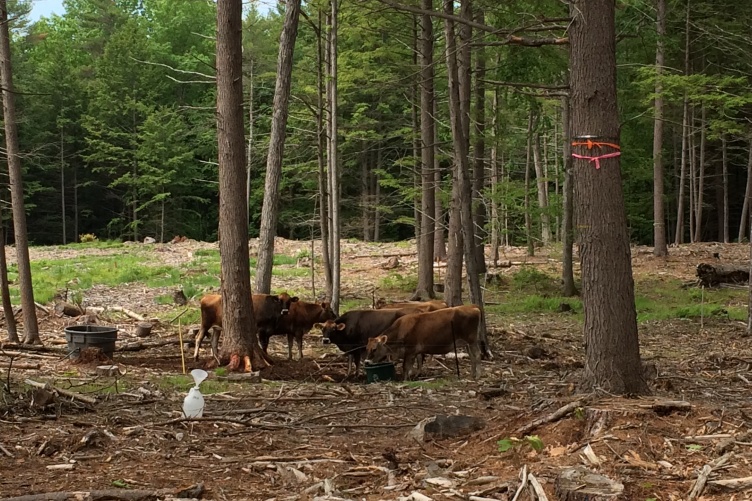
Trees in a countryside pasture can provide more than just shade for grazing sheep — new UNH research indicates that by keeping some trees in those pastures, rather than cutting them all down, farmers can help reduce the impacts of climate change.
When a forest is cut down to make way for agriculture, it releases greenhouse gases into the atmosphere. Silvopasture, a method of preserving trees in pastures where livestock graze, may provide a middle-ground solution: researchers found that compared to a completely cleared, tree-less, open pasture, the integrated silvopasture approach released lower levels of carbon dioxide and nitrous oxide and soil carbon storage remained the same, offering a possible alternative for farmers with fewer climate consequences.
“We talked to a lot of farmers in the Northeast who are interested in the silvopasture approach but there aren’t a lot of data to help guide them through implementation, and responsible and strategic management,” said Alexandra Contosta, research assistant professor at UNH’s Earth Systems Research Center. “We wanted to see if silvopastures made a difference and found that there are benefits to this approach that could help both the farmer and the planet.”
"We wanted to see if silvopastures made a difference and found that there are benefits to this approach that could help both the farmer and the planet."
In their study, published in the journal Agriculture, Ecosystems & Environment, researchers conducted land use change experiments in both New Hampshire and New York. In both locations, the land was divided into plots with a reference forest, open pasture and silvopasture. In the silvopasture plots, trees were thinned by 50% to 60% and tree stumps were left in place. Orchard grass, white clover and other foraging sources were planted. After the seeding, either dairy or beef cows were introduced. The team set up meteorological stations in each of the experimental areas, known as treatments, and monitored emissions of carbon dioxide, nitrous oxide and soil carbon storage. The researchers found that the silvopasture offered a reduction in the climate consequences of a typical forest clearing to open pasture, and the climate regulating benefits of silvopasture extended to soil greenhouse gas emissions. However, they did not find any difference in air temperatures between the plots and were not able to document any changes in soil carbon storage among different land use change treatments.
“New England has a lot of trees which can reduce our options for agriculture and our ability to produce our own food,” said Contosta. “So, what is exciting about this study is that it shows silvopasture could be a viable alternative that is also more climate conscious.”
The researchers say that ultimately their study highlights the need to better understand how silvopasture can improve the negative climate consequences of forest clearing for agriculture and has implications for the Northeast and other temperate, forested regions across the globe.
This research was supported by USDA’s National Institute of Food and Agriculture. Additional funding was provided by the New Hampshire Agricultural Experiment Station.
The UNH Institute for the Study of Earth, Oceans, and Space (EOS) is UNH's largest research enterprise, comprising six centers with a focus on interdisciplinary, high-impact research on Earth and climate systems, space science, the marine environment, seafloor mapping and environmental acoustics. With approximately 100 principal investigators managing more than 400 individual grant awards, and with annual expenditures exceeding $45 million, EOS fosters an intellectual and scientific environment that advances visionary scholarship and leadership in world-class and graduate education.
-
Written By:
Robbin Ray ’82 | UNH Marketing | robbin.ray@unh.edu | 603-862-4864

















































